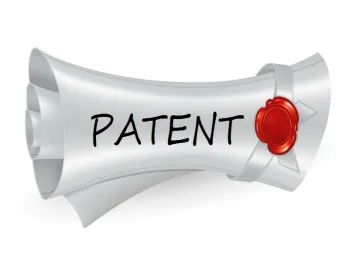Due to the relatively short shelf life for some consumer products, it can be important to quickly obtain patent protection for such products. Obtaining patent protection early in the life of such products can help inventors and companies maximize the value of their inventions by stopping competitors and knock-offs. Understanding the USPTO’s patent Examiner count system, and what motivates Examiners to act on an application, can be informative when determining how to efficiently move a patent application to allowance.
Patent Examiners are given a certain amount of “counts” (i.e., points) for each task they accomplish. And each Examiner must obtain a certain number of counts per work hour to meet their expected performance goals. Most regular full-time patent Examiners are required to log 40 work hours a week. This 40 work hour requirement may be less for any given week if an Examiner logs “other time.” For example, if an Examiner enters 2 hours of other time during a 40 hour week, the Examiner’s work hours for that week are 38. Bottom line: more counts + less work hours = higher performance for an Examiner.
Here are three tips for streamlining prosecution by using techniques that may lead to higher performance for an Examiner:
“Buy-One-Get-One Free” Track 1 Examination. Simultaneously prosecuting a non-Track 1 application with a Track 1 application can result in both applications being picked up for examination quickly. In some cases, simultaneous prosecution can be achieved by filing a Track 1 application and shortly thereafter filing a non-Track 1 continuation application, or vice versa.
As of June 2017, the average time to first action for Track 1 applications was about 3.5 months, which is significantly faster than the 16.4 average for non-Track 1 applications. A downside to filing a Track 1 application is the fee ($4000 for large entities, $2000 for small entities). But simultaneously prosecuting a Track 1 application and non-Track 1 application can result in a “two-for-one” fast track examination based on filing a single Track 1 application. The same Examiner will likely be responsible for both applications. While the Examiner will not be required to pick up the applications simultaneously, it may be beneficial for the Examiner to do so because of overlapping search strategies, particularly if the claimed subject matter is similar. When pursuing this strategy, it is often wise to make the Examiner aware of the similar non-Track 1 application, for example, during an interview in the Track 1 case.
“Express Checkout” With AFCP 2.0. Examiners are generally awarded 0.5 counts for a “disposal.” A disposal can be an allowance, an abandonment, an Examiner’s answer to an appeal brief, or filing of an RCE. The After Final Consideration Pilot 2.0 (AFCP 2.0) program gives an Examiner the opportunity to receive 0.5 counts for an allowance and 2–3 hours of “other time,” which can improve the Examiner’s performance bottom line.
To qualify for AFCP 2.0, an Applicant must file an after-final amendment that narrows at least one pending independent claim. As with regular after-final amendments, an Examiner will not be required to enter any AFCP 2.0 amendments. But clear, straightforward, structural-feature-focused amendments, with corresponding succinct arguments, may persuade an Examiner and help them make a quick and confident decision to allow an application. There is no USPTO fee for filing an AFCP 2.0 reply and it often reduces the chance of having to file an RCE.
Target. Target. Target. A quick allowance is just as beneficial for an Examiner as it is for an Applicant. A quick allowance results in quick “counts” for the Examiner. While not appropriate for all cases, an Applicant can often facilitate a quick allowance by: (1) leading with targeted, relatively narrow claims, (2) filing claims written to avoid a restriction requirement, and (3) increasing verbal communication with an Examiner.
Leading with targeted claims increases the likelihood that an Examiner will be required to initially find the best available prior art. This may reduce the number of office actions, and, thus, time before an allowance. This strategy can be particularly useful for cases covering a commercial embodiment currently on the shelf. Moreover, an Examiner may be inclined to pick up a later-filed continuation application with broader claims after already searching the narrower claims. In this case, broader patent protection may not be far behind the narrow protection.
Claims that reduce the chance of restriction can speed up prosecution. The process for a written restriction requirement can increase prosecution time by three months or more. Even if an Applicant files a response to a written restriction requirement within 2–3 weeks from mailing, the Examiner will be given 56 days to act on the response.
Additionally, verbal communication with an Examiner can often help speed up prosecution. An interview after receiving a non-final office action can be very informative and can aid in understanding an Examiner’s positions. Another avenue utility patent Applicants should consider is the First Action Interview Program (FAIP). FAIP provides an opportunity to directly communicate with an Examiner very early in prosecution of utility cases. As of June 2017, the first action allowance rate for FAIP cases was 29.4%. Details and requirements of the program are found here. Targeted, relatively narrow claims may be particularly suited for FAIP.
These and other strategies can be beneficial for both Applicants and Examiners. They can be particularly helpful to consumer product Applicants for efficiently obtaining patent protection while their products are on the shelf.
Chase Hammond contributed to this post.




 />i
/>i

